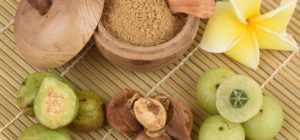The seasons, like your prakruti, are characterized by cycles of vata, pitta, and kapha. If you want to stay healthy all year long, try living in harmony with these natural cycles, adjusting to the changes in your environment through the food you eat, the type and amount of exercise you do, the herbs you ingest, and so on. While you can’t control the weather, you can control these factors, which either build your health, vitality, and resistance to disease, or wear you down. Here is ayurveda’s view on winter—and what you can do to stay balanced this season.Top of Form
Winter is characterized by cold weather, a sense of heaviness, increased moisture (usually in the form of rain or snow), cloud-covered days, and the grounded, slow feeling that sends many animals into hibernation. These are all qualities shared by kapha dosha, which is why winter is considered to be—primarily—a kapha season. When balanced, kapha supplies strength, vigor, and stability to both body and mind. This subtle energy is responsible for lubricating the joints, moisturizing the skin, and maintaining immunity. But in excess, it can lead to sluggishness, mucus-related illnesses, excess weight, and negative emotions such as attachment, envy, and greed. In general, we should follow a kapha-pacifying regimen in the winter. But dry, cold, windy weather can provoke vata, too, and can lead to arthritis, indigestion, and other problems. We have to calm both vata and kapha when temperatures plummet.
Waking up
- Ayurveda advocates to sleep a little later in the winter, but you will feel fresher and more motivated if you are up by about 7 a.m.
- Brush your teeth with toothpaste made from heating herbs such as cinnamon, clove, bilva, and haritaki and scrape your tongue. The body expels bacteria and leaves it to accumulate in the mouth over night so it’s really important to remove this first thing after rising so they aren’t recycled back into the body and also to improve circulation to the visceral organs.
- Swish warm sesame oil in your mouth and massage it into your gums.
- Nasya (using nasal drops) is a good practice in winter. Administer a few drops of vacha oil or ghee into the nasal passages to awaken the mind and keep the respiratory passages clear.
- Sip on two cups of warm water with a mixture of ginger paste, honey, and lemon juice to gently stimulate, heat and wake up the digestive system so it’s ready for the day.
- Treat your skin to a warm sesame oil massage (it’s heating and good for all prakrutis in the winter), eliminating the toxins and then take a hot shower to rinse off any excess.
Exercise and Yoga
Exercise is one of the best ways to support optimal physical and mental health through the winter months. It’s important to listen to your body this winter. If you’re feeling overextended and stretched, favor vata-pacifying types of exercise like walking, tai chi, or gentle yoga. If you’re feeling sluggish and heavy, give kapha a bit of a push with a more vigorous workout—perhaps a bike ride, a jog, or a challenging hike, snowshoe, or ski. Either way, the best time to exercise is in the morning, from 6–10 a.m. If that doesn’t work with your schedule, you can exercise in the evening hours, from 6–10 p.m.
An invigorating and expansive yoga practice this winter can be surprisingly supportive of your overall wellbeing. Appropriate poses include Sun Salutation (Surya Namaskar), Warrior I (Virabhadrasana I), Warrior II(Virabhadrasana II), Reverse Warrior (Viparita Virabhadrasana), as well as forward bends, and backward bends. Postures that stimulate metabolism like Bhujangasana, Dhanurasana, Vasisthasana, Spinal Rolls, Leg Lifts, and supine twists like Jathara Parivartanasana Variation are also very appropriate. If you’re trying to balance vata, close your practice with a long Savasana pose. Or, if kapha is high, consider Savasana Variation. If you practice pranayama, Skull Shining Breath, Bellows Breath, and Solar Breath will bring a sense of lightness to the mind and are all wonderful for increasing heat, circulation, and the digestive capacity. Full Yogic Breath and Alternate Nostril Breathing are especially balancing in cases of high vata or stress.
Food
In winter, the appetite is usually increased. In response to cold weather, the body constricts the skin pores and superficial connective tissue to prevent heat loss, which directs the heat away from the peripheral tissues and into the body’s core, including the stomach. Agni (and, therefore, your appetite) becomes stronger in winter.
Foods that nourish and balance the body in the cold, dry, winter season are the sweet, sour and salty tastes. It’s best to eat less of the astringent, bitter, and pungent tastes in winter, although all six tastes should be included in your diet. Warm, home-cooked, unctuous foods are ideal, as long as they are not deep-fried and are cooked with easy-to-digest oils such as ghee or olive oil.
Incorporate whole wheat unyeasted bread, oatmeal, cream of wheat, and tapioca; stews, soups, and gravies cooked with clarified butter, buttermilk, steamed vegetables, basmatic rice dishes, nuts such as pecans and almonds and spicy food into your meals. Because your appetite is heartier in the winter, eat more protein—beans, tofu, eggs—and if you’re not a strict vegetarian, chicken, turkey, and fish. Add warming spices such as cinnamon, cloves, and black pepper to promote digestion. Drinking a few ounces of sweet or dry wine with your meals will stoke your agni, improve your appetite, and increase circulation. Avoid cold drinks (they aggravate kapha and vata) and opt for hot water, hot tea, and occasionally, hot cocoa or ginger tea. Also avoid salads and raw foods.
Sex, Sleep and clothes
- Increased sexual activity is advocated in winter.
- Sleep early but before that, apply a bit of warm sesame oil to the scalp and soles of feet to retain the body temperature. Avoid daytime nap.
- Dress in warm clothes and make sure to wrap your head, ears and neck using scarves.
Panchakarma and herbs
Since winter is a kapha and vata season, doing panchakarma at the junction between fall and winter or in the winter is highly advised, especially for people with kapha problems (cough and congestion, edema, sluggish digestion and elimination, heaviness in the chest or stomach, repeated colds, weight gain, mental or physical lethargy, etc.). This deep cleansing and rejuvenation program helps to pacify vata and remove kapha from the organism (also known as ama, or toxins).
A teaspoon or two of Chyavanprash every morning will increase energy, immunity, and inner strength through the winter. Garnishing your food with a sprinkle of Trikatu powder can boost the digestive capacity and can encourage a clean and clear respiratory system. Other supportive herbs for the winter season include: black pepper, liquorice, ginger, cardamom, turmeric and tulsi.
Things to Do in Winter
* Eat a diet that is kapha and vata pacifying;
* Eat primarily sweet, salty and sour foods;
* Eat warm, easily digestible meals such as soups and stews;
* Stay warm and dry and away from strong winds;
* Exercise regularly to keep good circulation;
* Do regular yoga, pranayama and meditation;
* Daily oil massage with sesame oil;
* Sunlight exposure whenever possible;
* Drink warming teas such as ginger and cinnamon;
Things to Avoid in Winter
* Foods that increase kapha and vata;
* Cold or iced drinks;
* Skipping meals or fasting;
* Excess intake of bitter, astringent and pungent foods;
* Exposure to cold drafts and strong winds;
* Inactivity.
Dr. Neethu Johnson
PG scholar at Trivandrum Ayurveda Medical College in Swastha Vritha





